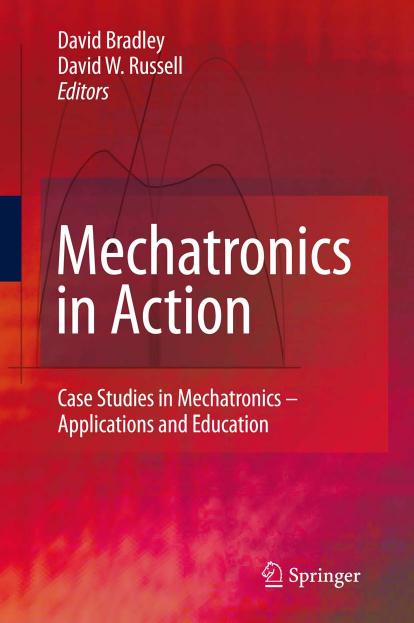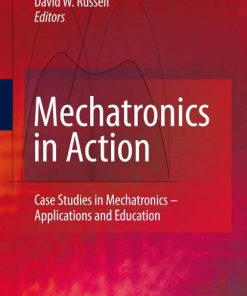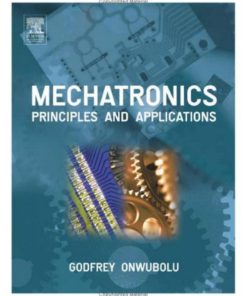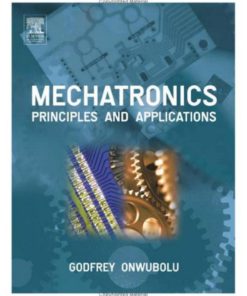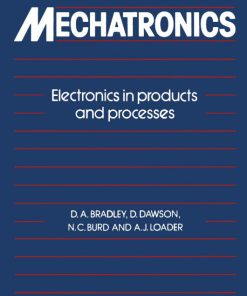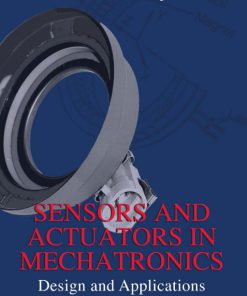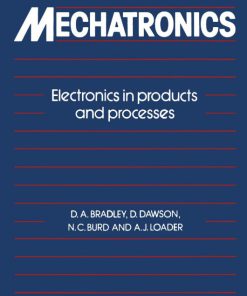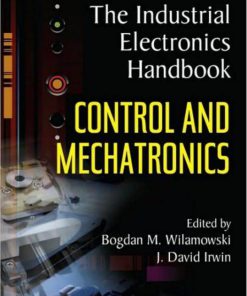Mechatronics in Action Case Studies in Mechatronics Applications and Education 1st Edition by David Bradley, David Russell 1849960798 9781849960793
$50.00 Original price was: $50.00.$25.00Current price is: $25.00.
Authors:David Bradley, David W. Russell , Series:Mechatronics Engineering [101] , Author sort:David Bradley, David W. Russell , Languages:Languages:eng , Published:Published:Apr 2010 , Publisher:Springer
Mechatronics in Action Case Studies in Mechatronics Applications and Education 1st Edition by David Bradley, David Russell – Ebook PDF Instant Download/Delivery. 1849960798, 9781849960793
Full download Mechatronics in Action Case Studies in Mechatronics Applications and Education 1st Edition after payment
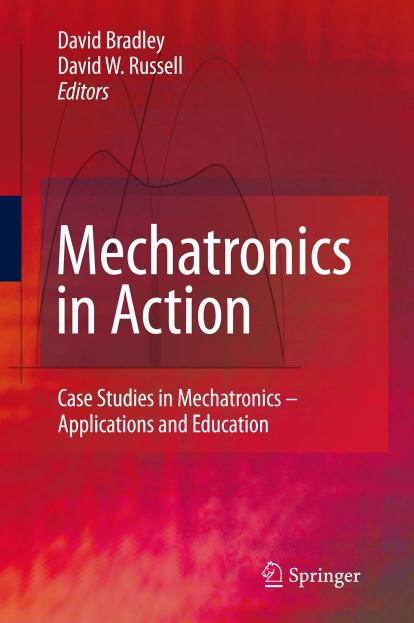
Product details:
ISBN 10: 1849960798
ISBN 13: 9781849960793
Author: David Bradley, David W. Russell
Mechatronics is a broad-based engineering discipline that is concerned with the integration of engineering concepts at the system level. As such, its impact is seen not in specific sections of technology, but in the way in which the technologies are integrated and merged at the system level from design to implementation. Mechatronics in Action’s case-study approach therefore provides the most effective means of illustrating how mechatronics can make products and systems more flexible, more responsive and possess higher levels of functionality than would otherwise be possible. The series of case studies serves to illustrate how a mechatronic approach has been used to achieve enhanced performance through the transfer of functionality from the mechanical domain to electronics and software. Educationally, case-based learning forms an important part of mechatronics course design and Mechatronics in Action not only provides readers with access to a range of case studies, and the experts’ view of these, but also offers case studies in course design and development to support tutors in making the best and most effective use of the technical coverage provided. Mechatronics in Action provides, in an easily accessible form, a means of increasing the understanding of the mechatronic concept, while giving both students and tutors substantial technical insight into how this concept has been developed and used.
Mechatronics in Action Case Studies in Mechatronics Applications and Education 1st Table of contents:
1. Introduction
1.1 Background
1.2 What Is Mechatronics?
1.2.1 Mechatronics and Design Innovation
1.2.2 Mechatronics and Manufacturing
1.2.3 Mechatronics and Education
1.3 Mechatronics and a Sustainable Future
1.3.1 Sustainability
1.3.2 Mechatronics and Sustainability
1.4 The Book
References
2. Consumption to Contribution: Sustainable Technological Development Through Innovation
2.1 Introduction
2.2 The Interpretation of Meaning for Sustainability and Innovation
2.3 Deconstructing Technological Innovation as a Driving Force for Sustainable Engineered Systems
2.4 Forecasting, Foresight and Technology Assessment
2.5 The Influence and Impact of Information and Communication Technologies
2.6 Consumption, Obsolescence and Moves Towards Future Proofing
2.7 Complexity Paradigms Within a Sustainability Context
2.8 Rationalising Material Selection and Processing
2.9 Conclusion – From Responsible Design to ResourceRecovery
References
3. The “Revolution”: a Small Company Revived
3.1 Some History of the UK Industry-Academic Link, the “KTP”
3.2 Some Observations on the Acceptance of Computer-aided Engineering (CAE) in Smaller Companies
3.3 The Ducker Engineering Case Study
3.3.1 Problem or Opportunity?
3.3.2 The “Revolution”
3.3.3 Further Benefits Demonstrated in the CAE Application
3.4 Conclusions
References
4. A Mechatronic Design Processand Its Application
4.1 Introduction to Mechatronic Design
4.2 Mechatronic Design Process Model
4.3 A Mechatronic Case Study
4.3.1 Mechatronic System Design Problem Description
4.3.2 Design Concept Development
4.3.3 Detailed Design
4.3.4 Electronic Control Unit
4.4 Conclusions
References
5. A Mechatronic Design of a Circular Warp Knitting Machine
5.1 Introduction
5.2 Warp Knitting Cycle
5.3 Circular Warp Knitting Machine Concept
5.4 The Needle Reciprocating Mechanism
5.5 The Patterning Mechanism
5.5.1 Servo Motor Selection
5.6 The Prototype
5.6.1 Servo-controlled Needle Motion
5.6.2 The Yarn Feed Mechanism
5.6.3 Truncated-cone Optimisation
5.7 Conclusions
References
6. Mechatronics and the Motor Car
6.1 Background
6.1.1 Vehicle Mechatronic Systems
6.1.2 Drivers for Change
6.2 Engine Basics
6.3 The Mechanical Solution for Ignition Timingand Fuel Delivery
6.3.1 Traditional Mechanical Ignition Timing
6.3.2 Fuel Delivery – the Carburettor
6.4 The Mechatronic Solution to Engine Management
6.4.1 Sensors
6.4.2 Actuators
6.4.3 Processing
6.5 Anti-lock Braking System (ABS)
6.5.1 Background to the Theory of Braking
6.5.2 ABS Components
6.5.3 ABS Diagnostics
6.6 Conclusions
References
7. Multi-mode Operations Marine Robotic Vehicle – a Mechatronics Case Study
7.1 Introduction
7.2 MPPT Ring System Overview
7.2.1 Main Features
7.2.2 The Virtual Underwater Laboratory
7.2.3 Architecture and Implementation
7.2.4 Imaging Sonar Simulator
7.2.5 Laboratory Configuration
7.3 University of Limerick (UL) Thrusted Pontoon/ROV
7.3.1 Base Vehicle
7.3.2 High-resolution Imaging Tool Skid
7.3.3 Onboard Electronics and Computer Control
7.3.4 Fault Tolerant Thruster Control
7.3.5 Autotuning of Low-level Controllers
7.3.6 High Frequency Sonar Enabling at Seabed Operation
7.3.7 Interchangeable Inshore and Deep Water Winch System
7.4 System Testing
7.5 Conclusions
References
8. Wireless Communication Technology for Modular Mechatronic Controllers
8.1 Introduction
8.2 Modular Mechatronic Controllers
8.3 Communications Technology
8.4 Model-based Mechatronic Controllers
8.5 Wireless Mechatronic Controller for the Camera Platform
8.5.1 Requirements for the Wireless Mechatronic Controller
8.6 Modelling of the Camera Platform
8.7 Results
8.7.1 Performance of the System
8.8 Conclusions
References
9. The Utility Function Method for Behaviour Selection in Autonomous Robots
9.1 Introduction
9.2 Behaviour Selection
9.3 The Concept of Utility
9.3.1 A Biological Example
9.4 The Utility Function Method
9.4.1 Motivation
9.4.2 Method
9.4.3 Optimisation Procedure
9.4.4 Application Example – a Transportation Task
9.5 Ongoing Work
9.5.1 Extended UF Method
9.5.2 Data Preprocessing and Artificial Emotions
References
10. Force Sensing in Medical Robotics
10.1 Background
10.2 Force Sensing Techniques in Medical Robotics
10.3 The Use of Force Sensing in Medical Robotics
10.3.1 Haptic Feedback During Robotic Surgery
10.3.2 Soft Tissue Diagnosis Through Tissue Mechanical Property Identification
References
11. Intelligent Prosthesis – a Biomechatronics Approach
11.1 Introduction
11.2 Biomechatronics and Biological Systems
11.2.1 Biomechatronics
11.2.2 The Human Body
11.3 Prosthetics
11.3.1 Human Locomotion
11.3.2 Current Prosthetics
11.3.3 Future Prosthetics
11.4 Conclusions
References
12. Education in Mechatronics
12.1 Introduction and Background
12.2 The Development of the Master of Science in Mechatronics Systems Engineering at Lawrence Techno
12.2.1 Rational for Course Development
12.2.2 Programme Structure and Implementation
12.3 Summary
References
13. Mechatronics Education
13.1 Introduction
13.2 Historical Context
13.3 Curriculum
13.3.1 Mechatronic Designer Programme
13.3.2 BSc Curriculum
13.3.3 MSc Curriculum
13.4 Modelling of Mechatronic Systems
13.5 Conclusions
References
14. A Personal View of the Early Days of Mechatronics in Relation to Aerospace
15. Mechatronic Futures
15.1 Introduction
15.2 Challenges
15.3 Home Based Technologies
15.4 Medicine and eHealth
15.5 Transportation
15.6 Manufacturing, Automation and Robotics
15.7 Communications
15.8 Nanotechnologies
15.9 Advanced Algorithms
15.10 Artificial Intelligence
15.11 Conclusions
People also search for Mechatronics in Action Case Studies in Mechatronics Applications and Education 1st:
robotics mechatronics
is mechatronics a good career
q2 case study
q-action
You may also like…
eBook PDF
Mechatronics Principles and Applications 1st Edition by Godfrey Onwubolu 0750663790 9780750663793
eBook PDF
Mechatronics Principles and Applications 1st Edition by Godfrey Onwubolu 0750663790 9780750663793

